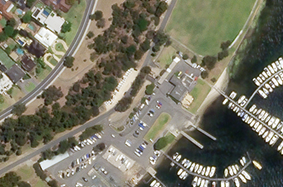Satellite imagery are traditionally static, the revisit time is limited and the cost is considerable. But what if we could have these images relative cheap, on a regular basis or even better … get videos from space? Three start-ups are in a severe competition, tossing cameras out of the atmosphere and trying to turn them into a business. They are Urthecast, Planet Labs, and Skybox. Each of the three is choosing different methods, different kinds of devices, and different orbits. Each is selling something a little different. Urthecast plans to install two cameras—one still and one video—on the International Space Station, then beam video down using the Russian Space Agency’s antennae. Planet Labs, another, hopes to send 28 satellites, each about the size of a garden gnome, into low orbit. It will immediately control the largest private Earth-observing fleet of satellites ever created. SkyBox, finally, only hopes to operate two satellites by 2014—but it is intending to have a swarm of 24 satellites. Up to 90 seconds of high-definition panchromatic video from spaceSkyBox Imaging won the first race. In the final days of 2013, Skybox became the first company ever to release HD video from space (see the “multi-media” section for an illustration). It captures up to 90-second video clips at 30 frames per second and this at a spatial resolution of 1.1 meter at nadir. Skybox is targeting commercial markets, such as the media and organizations wishing to monitor traffic, ports and industrial plants. Other applications of space video include the monitoring of floods, post-earthquake zones and other natural disasters and humanitarian crises. Potential scientific applications of space video include observing volcanic eruptions, forest fires, hurricanes and the movement of wildlife. A swarm of cheap satellites rendering a massive amount of dataAccording to the company, the SkySat-1 was built and launched for more than an order of magnitude less cost than traditional sub-meter imaging satellites. This results in relative cheap images and the capacity to build and launch multiple satellites. Skybox plans to launch another satellite in 2014, followed by the remainder between 2015 and 2017. This should lead to a swarm of 24 satellites! These satellites’ cameras will always be on, photographing everything in their path and, owing to their numbers, will pass over the same points on Earth with a frequency of hours to a few days, depending on latitude. Each of these satellites generate over a terabyte of data per day.  
Example of still image of the HD panchromatic video (left) and a multispectral image (right)(Source: SkyBox Imaging) Sources: Website SkyBox Imaging & article the Atlantic |